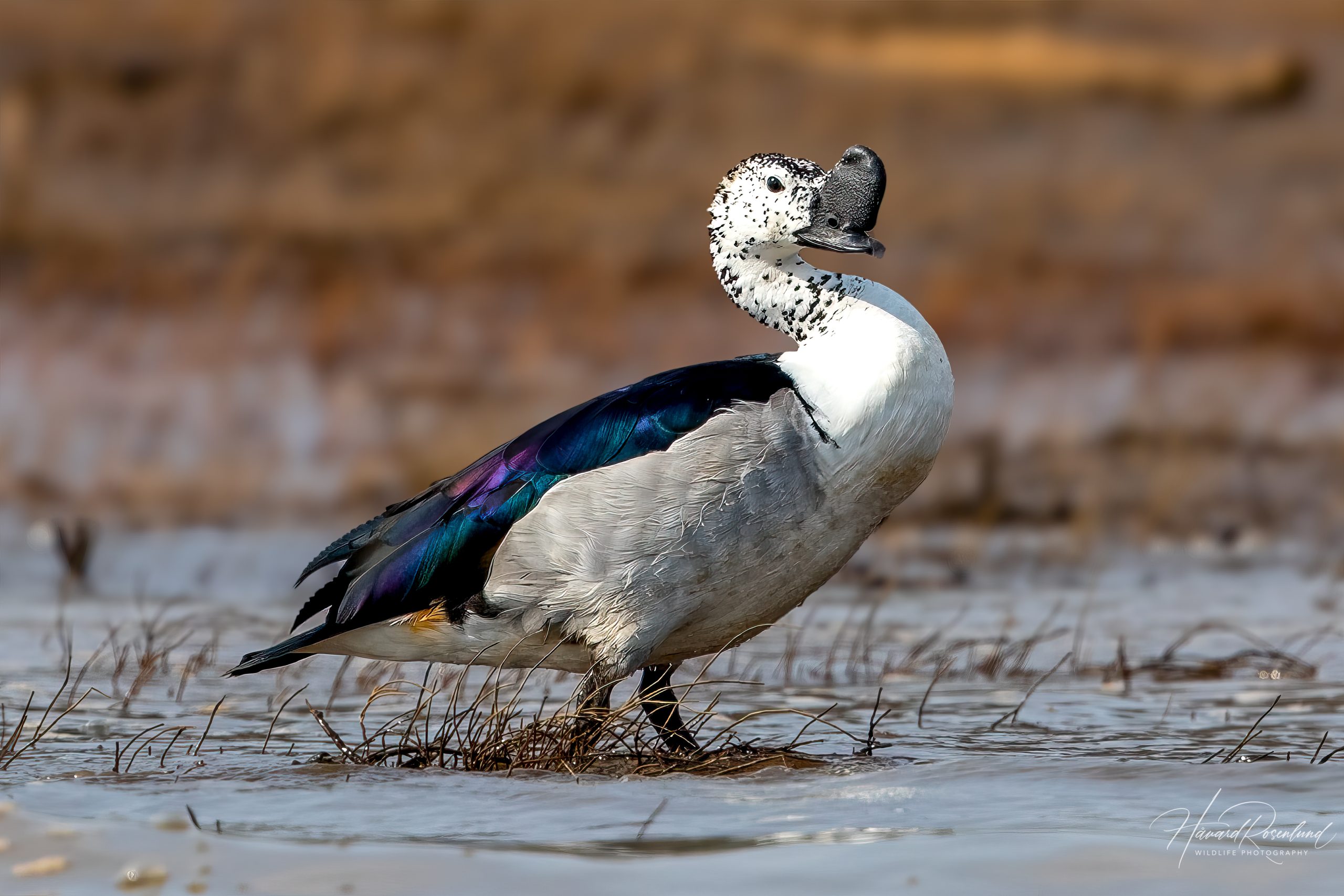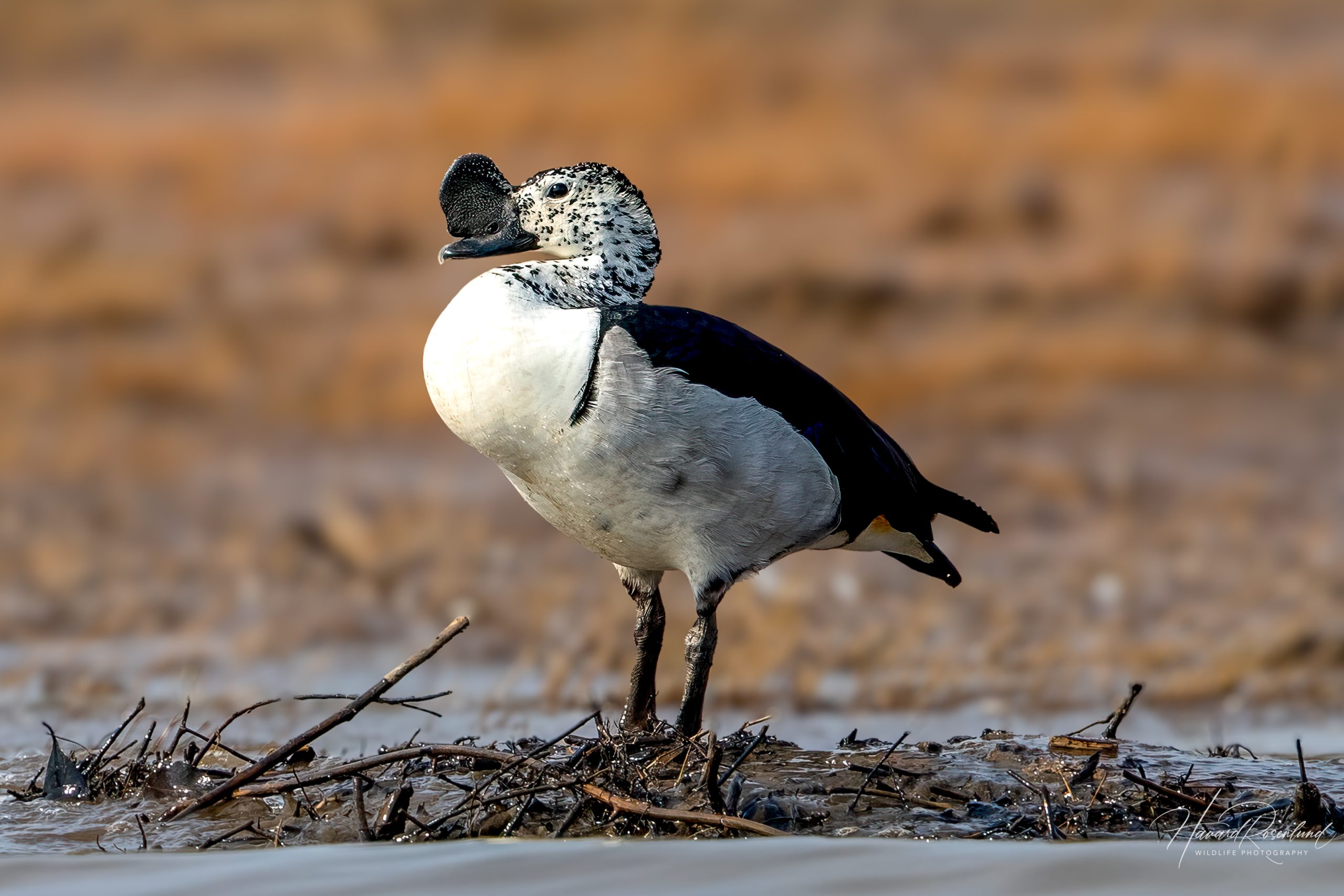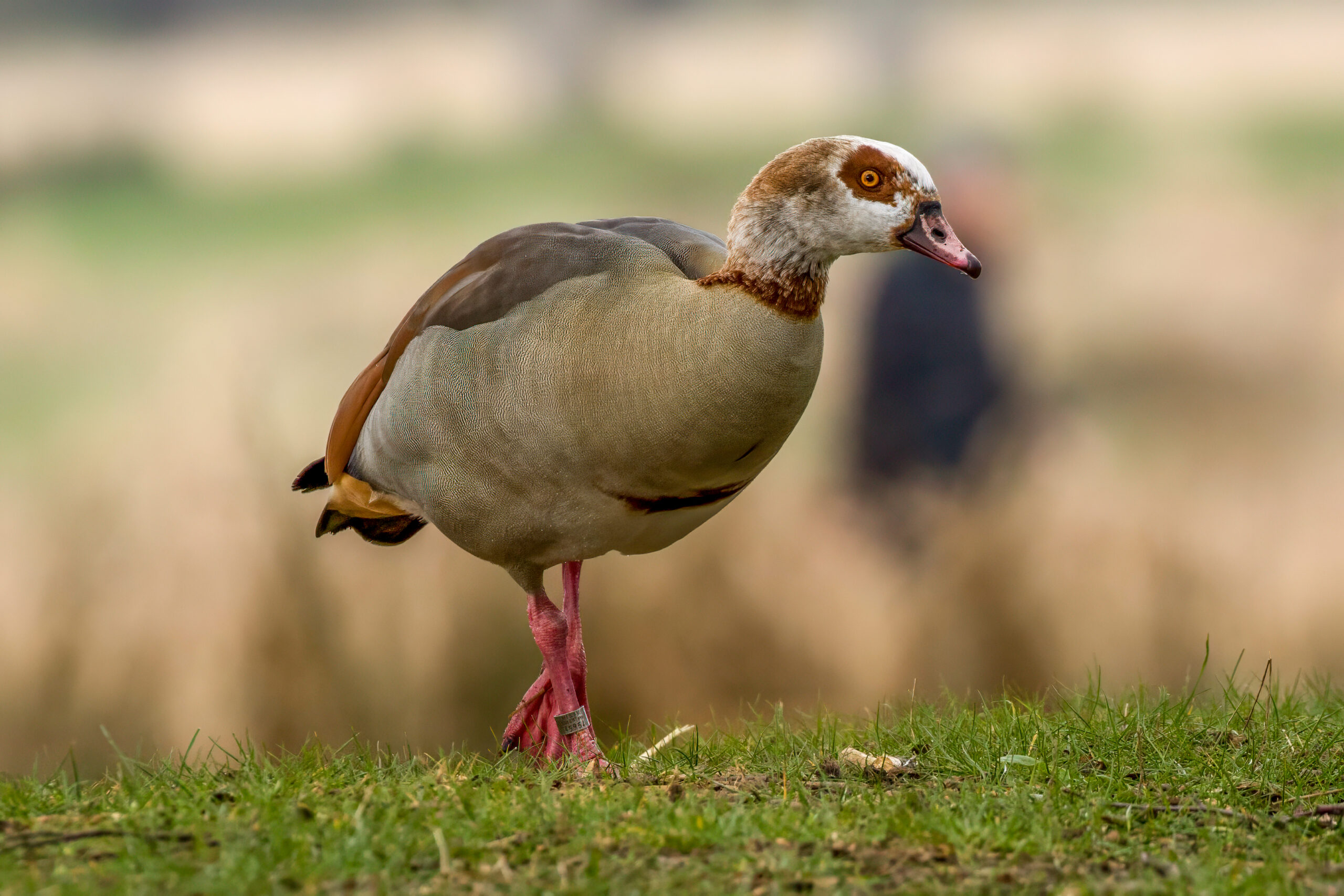Description
The knob-billed duck (Sarkidiornis melanotos) is a distinctive species found across sub-Saharan Africa, Madagascar, and parts of South and Southeast Asia. Males are particularly notable for the large black knob on their beaks, a feature that is less pronounced or absent in females, making sexual dimorphism evident. The species measures approximately 64 to 79 cm (25-31 in) in length, with a wingspan ranging from 116 to 145 cm (45-57 in), and males are typically larger than females.
The plumage is striking, with iridescent dark green, blue, and purple hues on the wings, contrasting with a white body adorned with scattered black spots. Juveniles are duller and lack the prominent knob seen in adult males. While similar in appearance to the closely related comb duck (Sarkidiornis sylvicola) found in South America, the knob-billed duck of Africa and Asia can be distinguished by slight variations in plumage and the shape of the bill’s knob.
Diet & habitat
The knob-billed duck inhabits a variety of wetlands, including lakes, rivers, marshes, and flooded grasslands. It is highly adaptable and can be found in both freshwater and brackish environments. These ducks are generally associated with areas that have abundant floating vegetation and open water.
Their diet consists mainly of aquatic vegetation, seeds, small fish, and invertebrates. They are known to feed by dabbling at the water’s surface, upending to reach deeper vegetation, and occasionally foraging on land for seeds and grains. Their broad diet allows them to thrive in various wetland habitats, where they play a significant role in controlling the aquatic vegetation.
Behavior
Knob-billed ducks are often shy, with males being notably more solitary than females and juveniles, especially outside the breeding season. While they are generally seen alone or in small groups, they do come together in loose flocks during feeding or migration. The species is a strong flyer, often traveling long distances in search of suitable wetland habitats, and is also an excellent swimmer, which aids in its diverse foraging activities. Their vocalizations are varied and include grunts, whistles, and quacks, which become more pronounced during the breeding season.
Nesting
Breeding usually takes place during the wet season when water levels are high, which ensures abundant food supply for the ducklings. The species is known for its unique breeding behavior, where multiple females may breed with the same male. They will then lay their eggs in the same nest, leading to large clutches of up to 50 eggs, although a single female typically lays around 8 to 15 eggs.
Nests are usually located in tree cavities, reeds, or tall grass near water bodies. The eggs are incubated solely by the female for about 28 to 30 days. After hatching, the ducklings are precocial, meaning they are relatively mature and mobile from the moment they hatch, but they still rely on the female for protection and guidance. The fledgling period lasts approximately 60 to 70 days, after which the young ducks are ready to fend for themselves.
Status
The knob-billed duck is currently listed as least concern by the IUCN, due to its wide range and stable population. However, local populations may be threatened by habitat destruction, particularly the draining of wetlands for agriculture and human settlement. In some areas, hunting pressure also poses a risk, though this species is generally not considered highly threatened at a global level.







